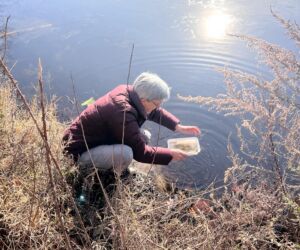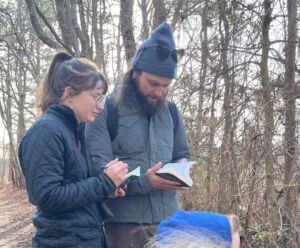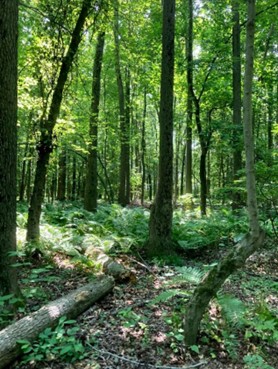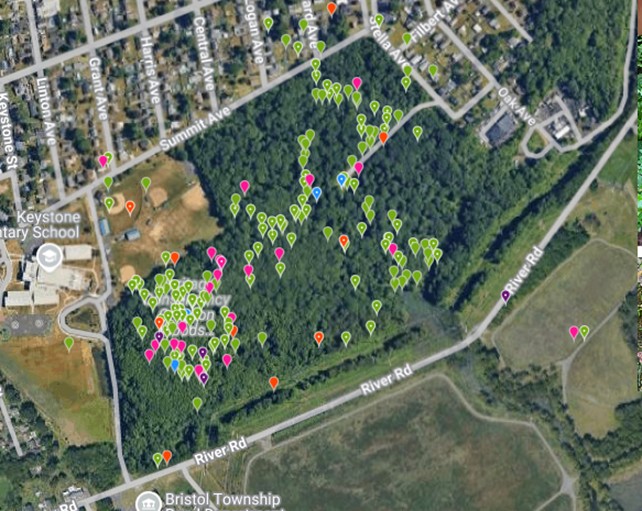 This early winter trip drew twenty people, including a moss expert and several experts in fungi from the Philadelphia Mycology Club. After passing through weedy flora near the parking lot, we botanized lowland habitats along a chain of ponds. These habitats included sphagnum bogs bordering the ponds and a few white cedar swamps that were small but contained mature white cedars.
This early winter trip drew twenty people, including a moss expert and several experts in fungi from the Philadelphia Mycology Club. After passing through weedy flora near the parking lot, we botanized lowland habitats along a chain of ponds. These habitats included sphagnum bogs bordering the ponds and a few white cedar swamps that were small but contained mature white cedars.
We saw classic New Jersey pine barrens flora, including Pinus rigida (pitch pine), Quercus mariana (blackjack oak), Quercus stellata (post oak), Clethra alnifolia (sweet pepperbush), Ilex glabra (inkberry), Anatherum glomeratum (syn. Andropogon glomeratus; bushy bluestem), and ericaceous shrubs (Chamaedaphne calyculata, Kalmia angustifolia, Kalmia latifolia, Lyonia ligustrina, Rhododendron viscosum, and Vaccinium spp.). Xerophyllum asphodeloides (turkey-beard) was abundant.
We also saw plants typical of the margins of the pine barrens, such as Quercus phellos (willow oak), Quercus alba (white oak), Quercus mariana (black oak), Acer rubrum (red maple), Diospyros virginiana (persimmon), and Aronia arbutifolia (red chokeberry).
Perhaps the most unusual plant was Elephantopus carolinianus (elephant’s foot), which grew in a good-sized patch at the edge of the trail. Our mycologically inclined participants noted numerous fungi, including several common (and commonly overlooked) rusts. The full species list is below. Individual observations during our trip can be found on iNaturalist at PBC/PMC iNaturalist observations Black Run Preserve.





